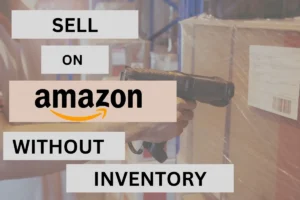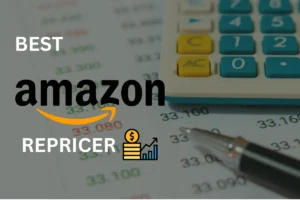Amazon FBA, renowned for its efficiency and convenience, allows sellers to store their products in Amazon’s fulfillment centers. Amazon then handles the picking, packing, shipping, and customer service for these products.
However, this convenience comes at a cost, and with the new changes set for 2024 – including adjustments in fulfillment fees, storage fees, and the introduction of new fees like the low-inventory-level fee – sellers must be more vigilant and adaptive than ever.
In this blog, we give tips to reduce Amazon FBA fees, offering practical, actionable strategies that can help you save on your FBA fees.
Understanding Amazon FBA Fees
Before diving into strategies to reduce Amazon FBA fees, it’s crucial to understand what these fees are and how they impact your business. Amazon FBA fees are essentially the costs associated with using Amazon’s fulfillment services.
These fees cover a range of services including storage of your products in Amazon’s warehouses, picking and packing of orders, shipping, handling customer service, and processing returns.
Key Components of Amazon FBA Fees:
- Fulfillment Fees: These are charged per unit sold and vary based on the size and weight of the product. This fee encompasses the costs of picking, packing, and shipping your product to the customer, including handling customer service and return processing.
- Monthly Storage Fees: Amazon charges these fees based on the amount of space your inventory occupies in their fulfillment centers. These fees are calculated per cubic foot and can vary depending on the time of year, with higher rates typically charged during the peak holiday season.
- Long-Term Storage Fees: If your inventory remains unsold in Amazon’s fulfillment centers for an extended period (usually over 365 days), Amazon imposes long-term storage fees. These are in addition to the regular monthly storage fees and are charged to encourage sellers to maintain a healthy inventory turnover.
- Additional Fees: Depending on specific circumstances, additional fees might apply. These can include fees for processing customer returns in specific categories, removal order fees (if you decide to remove your inventory from Amazon’s warehouse), and unplanned service fees for products that arrive at a fulfillment center without proper preparation or labeling.
Tip 1 – Optimize Product Size and Weight
Optimizing the size and weight of your products is a crucial step in reducing Amazon FBA fees.
Since fulfillment fees are largely determined by these two factors, making your products as compact and lightweight as possible without compromising their quality can lead to significant savings. Start by reevaluating your product’s packaging; often, packaging can be made more efficient.
Aim for packaging that securely fits the product while minimizing excess space and materials. This approach not only reduces the dimensional weight used in calculating shipping costs but also potentially moves your products into a lower size tier, further reducing fees.
Additionally, consider the materials of both the product and its packaging. Using lighter materials can decrease the overall weight, which in turn lowers the shipping costs associated with each unit sold.
Note that even small reductions in size and weight can accumulate to substantial savings, especially when dealing with large volumes of sales.
Tip 2 – Efficient Inventory Management
Efficient inventory management is essential in minimizing Amazon FBA fees, particularly those related to storage.
By effectively managing your inventory levels, you can avoid both overstocking, which leads to higher storage fees, and understocking, which can result in stockouts and lost sales.
Utilize inventory management tools like the Automated Dropshipping Software, which offer forecasting capabilities to help you maintain optimal inventory levels. These tools can analyze sales data and trends, enabling you to predict demand more accurately and adjust your inventory accordingly.
Aim to strike a balance where you have enough stock to meet demand but not so much that you’re paying for excessive storage. Additionally, regularly review your inventory for slow-moving or stagnant items.
Removing or re-marketing these items can reduce long-term storage fees and improve your inventory turnover rate. By staying vigilant and proactive with your inventory management, you can significantly reduce the costs associated with Amazon FBA storage fees.
Tip 3 – Advance Preparation and Labeling
Advance preparation and proper labeling of products before sending them to Amazon’s fulfillment centers can lead to substantial savings in FBA fees.
Amazon has specific requirements for product packaging and labeling, and failure to comply can result in unplanned service fees. To avoid these fees, ensure that your products are prepped according to Amazon’s guidelines.
This includes using the right packaging materials and ensuring that products are safely and securely packaged for shipping and handling. Additionally, correctly labeling your products is crucial.
This involves not only adhering to Amazon’s barcode requirements but also ensuring that each item is clearly marked to avoid misplacement or misidentification in the fulfillment process.
If possible, work with your suppliers or manufacturers to have them apply the necessary labels and packaging as per Amazon’s standards.
By handling these aspects of preparation and labeling in advance, you can avoid the additional costs that Amazon charges for non-compliance, thereby reducing your overall FBA fees.
Tip 4 – Audit Your FBA Seller Fees and File Claims
Regularly auditing your Amazon FBA seller fees is a critical practice for identifying and correcting any discrepancies that may inflate your costs.
Despite the sophistication of Amazon’s billing systems, errors can occur, and these may include overcharges or misclassified products. Set a routine, such as a monthly review, to go through each invoice and cross-check it against your records.
Pay close attention to details like product dimensions, weight, and category to ensure you are being billed correctly.
If you find any inconsistencies or errors, don’t hesitate to file a claim with Amazon’s Seller Support. It’s important to provide detailed information and any supporting documentation when filing these claims to facilitate a swift resolution.
By maintaining vigilance over your FBA fees and actively addressing any inaccuracies, you can protect your Amazon automation business from unnecessary expenses and ensure you are only paying the fees that are rightfully due.
Tip 5 – Manage Unfulfillable Inventory
Effectively managing unfulfillable inventory is a vital strategy in reducing Amazon FBA fees. Unfulfillable inventory refers to items that, due to damage, returns, or other reasons, cannot be sold.
These items, if left unchecked, continue to occupy space in Amazon’s warehouses, accruing storage fees. To address this, regularly review your Inventory Health report in Seller Central to identify any unfulfillable items.
Once these items are identified, you have a couple of options: either have them returned to you or authorize Amazon to dispose of them.
Actively managing this aspect of your inventory prevents the accumulation of unnecessary storage fees and helps maintain a healthier, more cost-effective inventory.
By promptly dealing with unfulfillable inventory, you can free up storage space for items that are selling and reduce the financial burden of storing goods that cannot contribute to your revenue.
Tip 6 – Understand and Manage Long-Term Storage Fees
Managing long-term storage fees is crucial for minimizing Amazon FBA costs, as these fees can significantly impact your bottom line. Amazon imposes long-term storage fees on items that have been in their fulfillment centers for over 365 days.
These fees are notably higher than standard storage fees, charged at a rate of $6.90 per cubic foot or $0.15 per unit, whichever is greater.
To illustrate, let’s consider a scenario: If you have 100 units of a product, each taking up 0.1 cubic foot, stored for over a year, the long-term storage fee would be $69 per month (100 units x 0.1 cubic feet x $6.90). This cost can quickly add up, especially for larger inventories.
To avoid these fees, it’s vital to regularly monitor your inventory age. Utilize the Inventory Age report in Seller Central to track how long items have been stored. For products approaching the 365-day threshold, you need to act.
For example, if you notice a particular item has been in storage for 330 days, consider strategies like reducing the price, creating a promotion, or boosting visibility through Amazon’s advertising platforms to expedite sales.
Additionally, align your inventory strategy with demand cycles. For instance, if you sell seasonal products, plan your stock levels to ensure you don’t over-order items that are unlikely to sell off-season.
By actively managing your inventory to prevent long stays in Amazon’s warehouses, you can sidestep hefty long-term storage fees and maintain a healthier, more profitable FBA operation.
Tip 7 – Utilize Amazon’s FBA Small and Light Program
Utilizing Amazon’s FBA Small and Light Program can be a game-changer to help reduce your Amazon FBA fees, particularly for sellers dealing in smaller, lighter products.
This program is specifically designed for items weighing less than 12 ounces (340 grams) and priced under $7. By enrolling in the Small and Light Program, you can access significantly lower fulfillment fees compared to standard FBA fees. For example, a product weighing 10 ounces would typically incur a standard fulfillment fee of around $2.50 to $3.00.
Under the Small and Light Program, the fee for the same item could be reduced to approximately $1.50 to $2.00, depending on the specific dimensions and category.
To illustrate, let’s consider a scenario where you sell a pack of lightweight stickers priced at $6. Normally, the standard FBA fee might make it challenging to maintain profitability for such a low-priced item.
However, by enrolling the product in the Small and Light Program, the reduced fees can significantly enhance your profit margins.
It’s important to note that products enrolled in this program must meet Amazon’s size and weight criteria and should have a minimum sales velocity.
Regularly review your product catalog to identify eligible items and consider adjusting prices or packaging to meet the program’s requirements if necessary.
By leveraging the FBA Small and Light Program, you can effectively lower fulfillment costs, making it easier to compete in the market for small, inexpensive items.
Tip 8 – Creative Packaging Strategies
Implementing creative packaging strategies is a vital approach to reduce Amazon FBA fees, particularly fulfillment fees. One effective method is product bundling, where you combine multiple items into a single package.
For example, instead of selling individual pairs of socks, bundle them into packs of three or five. This strategy reduces the number of individual units needing fulfillment, thereby lowering the per-unit fulfillment cost.
Another tactic is to redesign your packaging to be more compact and efficient, which can shift your products into a lower size tier for fulfillment fees.
For instance, if you’re selling a product in a box that has unnecessary space, redesigning the box to fit the product more snugly can reduce the dimensional weight used for calculating shipping fees.
Additionally, consider packaging materials that are lightweight yet protective to keep the product safe without adding unnecessary weight.
These creative approaches to packaging not only help in reducing Amazon FBA fees but can also enhance the customer experience and perceived value of your products.






